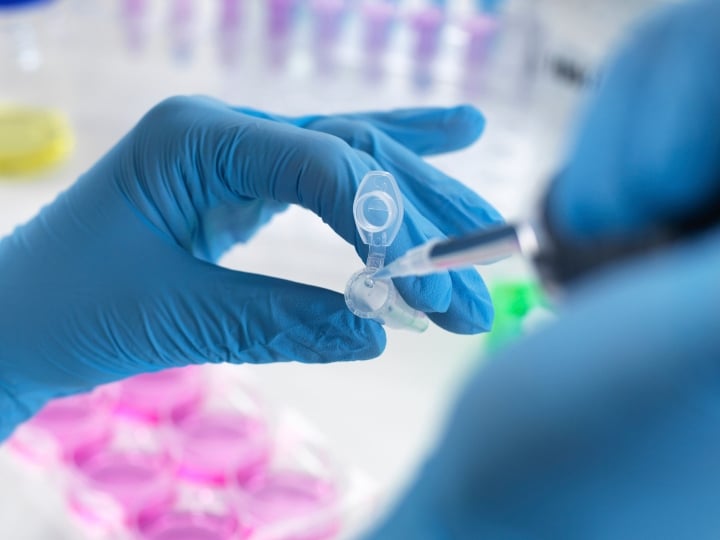Gas chromatography - mass spectrometry services using GC-MS, Pyrolysis, GC-QTOF MS to measure substances or compounds to low ppm and ultra-trace levels of impurities or substances in a wide range of samples
Gas Chromatography- Mass Spectrometry (GC-MS) is a powerful analytical technique used across multiple industries for identifying and quantifying unknown compounds at trace and ultra-trace levels. It is widely applied in impurity analysis, quality control, regulatory compliance, and research, making it a key tool for molecular characterization.
Our experienced scientists and extensive range of gas chromatography-mass spectrometry analytical instrumentation are focused on delivering tailored gas chromatography services to support testing and research for clients worldwide. For over 30 years, our dedicated GC-MS experts have developed and deployed various techniques to help solve some of the industry’s most critical questions. We have worked on diverse GC-MS applications across many samples and sample matrices, such as regulatory REACH compliance support and determination of non-intentionally added substances (NIAS) for food contact materials.
Regulatory GC-MS applications
For regulatory submission, for example, GC-MS is the technique of choice, where it is essential to identify components present down to very low levels. It is also one of the foremost techniques used for organic and trace analyses.
GC-MS screening for unknowns
The combined strength of our extensive range of analytical instruments and our experience with our analysts means that we routinely help clients meet their critical challenges, such as:
- Qualitative or semi-quantitative screening of unknown including impurities, reaction products, quality assurance needs, comparison of production batches and investigation of product, material failure
- Finding a new supplier/ raw material or product focusing on establishing equivalency. Examples include screening for non-intentionally added substances (NIAS), potential allergen substances in cosmetics fragrances, and reaction monitoring for processes
GC-MS testing to resolve failure analysis and chemical troubleshooting
Our experienced analysts have great experience in areas such as contamination issues, polymer-type failure analysis, or odour analyses.
Gas chromatography-mass spectrometry analytical techniques available
- GCMS Headspace Analysis: Headspace is often used when clients face odor issues. During this process, a sample is heated in a sealed vial to an elevated temperature for a period of time. A proportion of the headspace is then introduced into the GCMS to identify the volatiles produced. Headspace replicates volatiles being released during the production stage of materials or whilst a product is in use.
- Gas Chromatography Mass Spectrometry GC-MS: GC/MS databases play a crucial role in sample identification by providing extensive libraries of mass spectral fingerprints for known compounds, which our experienced analysts utilise in their analysis. These databases enable rapid and accurate compound identification by comparing the acquired spectra of an unknown analyte to reference spectra.
- GC-MS Selected ion monitoring (SIM): This technique allows for specific ions of interest to be monitored over time, which increases the system sensitivity, allowing for better detection limits for compounds of interest.
- Quadrupole GC/MS Standard GCMS analysis is ideal for analysis of known samples and repeat methods. A ‘workhorse’ detector for all routine sample analysis doesn’t necessarily require trace-level analysis.
- High-Resolution Gas Chromatography Mass Spectrometry (HR-GC-MS): This technique offers increased sensitivity about some detectors used in routine analysis or in specific cases where detection limits are essential. This capability is particularly advantageous for trace-level detection in environmental monitoring or advanced research applications requiring high specificity and sensitivity.
- Tandem GC Mass Spectrometry (GC-MS/MS): Daughter ions provide detailed structural information about an analyte, helping improve specificity and sensitivity in complex sample analysis. By analysing mass-to-charge (m/z) ratios, our experienced analysts can accurately confirm compound identity, differentiate isomers, and quantify trace substances, making GC-MS/MS a powerful tool in forensic, environmental, and pharmaceutical applications.
- Thermal desorption GCMS: Thermal desorption is a valuable technique for identifying volatile compounds released from systems without demanding sample preparation. Thermal desorption has many uses including NIAS, regulatory, air sampling, residual monomer, additives and solvent identification.
- GC-QTOF MS: QTOF MS combines a Quadrupole and Time of Flight mass spectrometer. This provides high resolution and high mass accuracy. Where it is impossible to find a match for compounds using conventional MS, QTOF mass accuracy can give a definitive chemical formula. Our experts are experienced in substance identification and assisted with comparing database information (e.g. NIST database). This method can also be combined with liquid injection, headspace or thermal desorption.
- Pyrolysis GC-MS: Pyrolysis Gas Chromatography Mass Spectrometry analysis combines three analytical tools: Pyrolysis, Gas Chromatography and Mass Spectrometry. Adding pyrolysis to the traditional GC-MS allows heat samples to 1200°C in either an inert atmosphere or under air, breaking down large, complex molecules into more detectable chemical species. In industry, pyrolysis provides the ability to identify, characterise and fingerprint complex polymer systems such as plastics, rubber and paints. The process allows analysis of high molecular weight, insoluble, crosslinked and thermally stable polymers. Additionally, when harnessed with GC-MS, pyrolysis does not require solvents, which means it is possible to identify low-level monomers, residual solvents, additives and crosslinkers without adding further contaminants.
Discuss how our expert GC-MS services can tailor a solution to meet your specific analytical needs. Let us help you achieve accurate and reliable results for your research and quality control requirements - contact us today.

